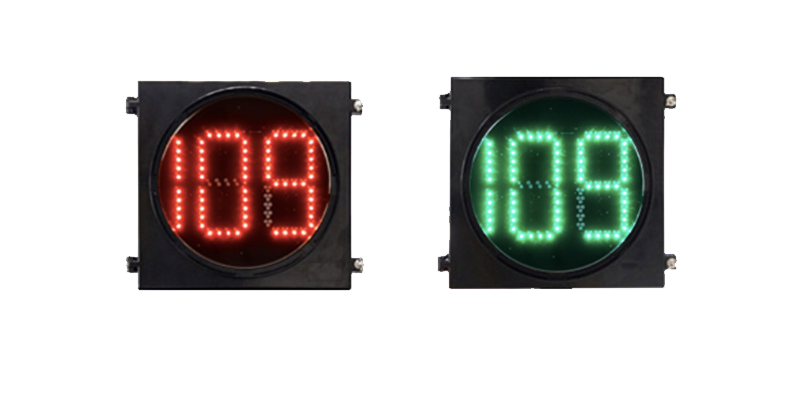How do traffic light timers work?
Traffic light timers, also known as countdown timers, have become increasingly prevalent at intersections worldwide, providing real-time information about the remaining time until the traffic signal changes. These timers aim to improve safety, reduce driver frustration, and enhance overall traffic flow. In this article, we will explore the working mechanism of traffic light timers, shedding light on their functionality and highlighting their benefits in promoting safer and more efficient road usage.
Synchronization with Signal Phases: Traffic light timers are synchronized with the signal phases of traffic lights at intersections. Each traffic signal cycle is divided into different phases, such as green, yellow, and red, with specific time durations. The timers are programmed to correspond to these phases, displaying the remaining time for each phase.
Real-Time Countdown Display: Once the traffic signal changes to a specific phase, the countdown timer starts to display the remaining time for that phase. For example, when the signal changes to green, the countdown timer begins displaying the time remaining for the green phase. As the seconds tick down, the timer visually indicates the decreasing time until the next signal change.
Timing Accuracy and Adjustments: Traffic light timers are carefully calibrated to ensure accuracy in displaying the remaining time. These timers utilize precise timing mechanisms and algorithms to synchronize with the traffic signal cycle and accurately reflect the duration of each phase. It is essential to calibrate the timers correctly to provide reliable and consistent information to road users.

Integration with Sensors and Controllers: Traffic light timers are integrated with advanced sensor and controller systems at intersections. These systems utilize sensors, such as vehicle detectors or pedestrian push buttons, to detect traffic flow and trigger signal changes. The timers receive input from these sensors and controllers, allowing them to initiate the countdown display at the appropriate phase.
Enhancing Safety and Awareness: The primary objective of traffic light timers is to enhance safety and awareness for both drivers and pedestrians. By displaying the remaining time until the signal change, road users can make informed decisions about their actions. Drivers can anticipate the signal transition and adjust their speed accordingly, reducing abrupt braking or acceleration. Pedestrians can gauge whether they have sufficient time to cross the intersection safely or if they should wait for the next signal cycle, minimizing the risk of accidents.
Reducing Red-Light Violations and Congestion: Traffic light timers have proven effective in reducing red-light violations. With the knowledge of the remaining time, drivers are less likely to take risks to beat the red signal. This adherence to traffic laws contributes to improved safety at intersections. Additionally, by promoting a smoother traffic flow, traffic light timers reduce congestion and enhance overall roadway capacity, minimizing travel times for road users.
Considerations for Intersection Design and Traffic Patterns: The implementation of traffic light timers should consider the specific characteristics of each intersection. Factors such as intersection design, traffic patterns, and pedestrian volumes should be taken into account. Proper synchronization with adjacent signals is crucial to ensure a seamless flow of traffic. Additionally, adjustments may be required based on the unique needs and requirements of each intersection.
Conclusion:
Traffic light timers play a vital role in enhancing safety, reducing red-light violations, and improving traffic flow at intersections. By synchronizing with the signal phases and providing real-time countdown displays, these timers promote awareness, informed decision-making, and adherence to traffic laws. Integration with sensor and controller systems ensures accuracy and reliability. Traffic light timers enhance safety for drivers and pedestrians, while reducing congestion and travel times. The implementation of these timers should consider intersection design, traffic patterns, and synchronization with adjacent signals. Overall, traffic light timers contribute to a safer and more efficient road network, fostering a harmonious and organized flow of vehicles and pedestrians.
237
0
0


Comments
All Comments (0)